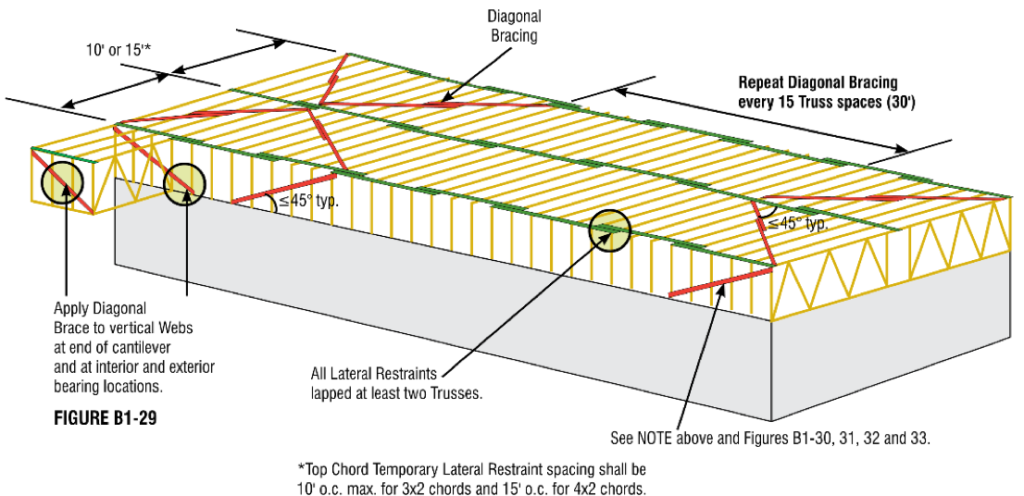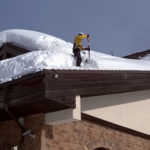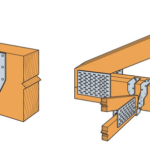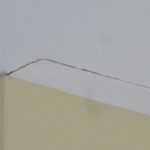Understanding construction loading is important as it relates to the acceptable practices in terms of staging and storing construction materials prior to installation. What does “construction loading” mean? This term describes materials and people that are present during the course of construction. It refers to any construction material that is stacked and/or staged on the trusses for any length of time prior to the installation of said materials. This also includes those individuals that are working or walking on the trusses during the course of construction.
One of the most important concepts to understand is that before any construction materials can be loaded on roof or floor trusses, the trusses must be adequately restrained and braced. This must be done in accordance with BCSI-B1 and BCSI-B2. Loading material on trusses prior to adequate restraint and bracing can lead to failure, collapses, injury and even death. This is especially important when structural elements such as roof or floor trusses are involved.
The Truss Plate Institute, along with the Structural Building Component Association, provides guidelines (BCSI-B4) for the amount of material that can be stacked on a roof or floor along with the proper placement and orientation of this material, and the length of time the material can be staged. Additional guidelines include the following:
- Do not position material so that it creates excessive load over a single truss or small group of trusses, but rather, place the material so that the load can be distributed over multiple trusses
- Material should be placed perpendicular to the trusses.
- Furthermore, it is optimal to position the material along interior or exterior supports or bearings.
It is imperative not to overload trusses, because this can have long-term effects on their structural performance. Even after the loads from building materials have been removed, the deflection or sagging in the roof or ceiling often remains.
As a component manufacturer, you have probably heard or read all of this information before. It’s important that component manufacturers are educated in the best practices and guidelines defined within the BCSI. However, it cannot end there. These guidelines have little value if they are not correctly implemented on the jobsite.
How can you, as the component manufacturer, help promote jobsite safety and ensure that trusses retain their structural integrity? First, it’s vital that you send BCSI summary sheets with your jobsite packages. Second, use this as an opportunity to educate your customer, contractors and sub-contractors. Third, ensure that your staff is familiar with current information and facilitates preconstruction meetings with your customers. A little upfront work can save a lot of headache and cost throughout the construction process. Simpson Strong-Tie is committed to offering sound structural solutions and providing education to help people design and build safer, stronger structures.
To sign-up to receive more Simpson Strong-Tie content in your inbox go to strongtie.com/subscribe.






